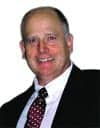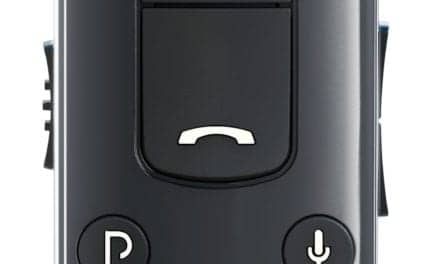Everest Biomedical Instruments is scaling new medical heights with a breakthrough device for testing newborn hearing.

Hearing Screening for Newborns
In 1993, after 50 years of lobbying by expert commissions and task forces for early screening for hearing loss, the National Institutes of Health (NIH) recommended that hearing screenings be conducted on all newborns prior to hospital discharge. Since then, 36 states have passed laws mandating some form of newborn hearing screening.
Against this background, Everest Biomedical Instruments Company, a 6-year-old company based in the St Louis suburb of Chesterfield, is turning the field of newborn hearing screening on its ear. In April, Everest introduced the AUDIOscreener™, the first portable, handheld computer-independent device that screens for the two essential indicators of auditory function—otoacoustic emissions (OAE), which assess the response of the ear itself, and auditory brainstem response (ABR), which tests the acoustic function of the brain.

The device differs in some significant ways from standard equipment that has been used in the past, notes Gerald Popelka, PhD, Everest’s vice president of research and development. Most of those devices were large, cumbersome, and computer-based, and needed to be wheeled around on carts and plugged into the wall. “They were never adapted to hearing screening in the newborn nursery,” Popelka says. “Operators had to be trained for many years to interpret the results, and they often had to sedate the baby in order to perform the tests.”
Everest’s contribution, Popelka says, “is to take great big computers, shrink them to small devices, and get them to operate in a simple way so that you don’t need much training to use them.”
Internal, Rechargeable Batteries
The handheld devices, about the size of a paperback book, operate on internal rechargeable batteries that function for 24 hours on a single charge. Since deafness is largely a problem with the inner ear—while ear infections usually affect the middle ear—the OAE screening tests the function of the inner ear and the structures in front of it, Popelka explains. When the normal ear is stimulated, the inner ear generates its own sounds, which will then emerge into the ear canal. When a microphone is put there, the sounds—the otoacoustic emissions—are detected, indicating whether the inner ear is working normally. However, since the inner ear needs to be “connected” to the brain in order to make sure the neural part of the auditory system is functioning well, the auditory brainstem response should also be measured, Popelka says.
Each test takes about a minute and a half per ear. In the OAE screening, a small, plastic probe containing both a transmitter and a microphone is inserted in the baby’s ear. The transmitter sends sounds into the inner ear and the microphone measures the vibrations made by the hair cells in the cochlea. The result can only be a “pass” or a “refer,” never a “fail.”
If the child receives a refer result, he or she is given the ABR test. In this test, small disposable electrodes are placed on the baby’s forehead and behind the ear to measure the brain’s activity in response to the sounds emitted inside the ear. During this test, the child must usually be sleeping or sedated. If an infant receives a refer result on the ABR test, it is recommended that he or she get a full diagnostic evaluation before they are 6 months old in order to identify the cause and severity of the hearing impairment.
Although hospitals, clinics, and physicians can purchase a version of the device that tests only OAE function or only ABR function, NIH and the American Academy of Pediatrics recommend universal newborn screening using both tests. “Because problems can occur throughout the auditory system, we believe that you need to do both tests,” Popelka says.
Everest maintains that the dual-screening method also reduces the incidence of normal hearing children who mistakenly receive refer or false-positive results. The latter can and do occur—for example, if a child has fluid in the ear canal or when there is too much external environmental noise. Although it is virtually impossible for a hearing-impaired child to be given a pass, a false-positive result can present both an emotional issue for the parents of a child who receives this outcome, and a financial burden, since further diagnostic testing can be costly and often requires sedation.
Identifying Hearing Loss Early
Why screen at birth? The reason, Popelka says, is clear from cross-sectional studies that have shown that babies who were identified at 6 months and younger with hearing loss and received interventions—including hearing aids in the first few months of life or a cochlear ear implant as early as 12 months, and are then enrolled in educational and rehabilitation programs—are usually able to reach their full language potential and live “normal” lives.
“I could bring you 5- and 6-year-old children who are deaf and the only way you would know is that they have cochlear implants dangling from their ears, or hearing aids,” Popelka says. “The vast majority of them are leaving the special schools [for the hearing impaired] before grade school and their speech is normal,” Popelka says. Those who do not get the early help, however, are likely to experience delayed language, reading, and social skills, he adds.
The growing number of states mandating screenings for newborns is testimony to the increasing recognition among financially strapped state legislatures that early intervention not only helps hearing-impaired children lead normal lives, but may save states millions of dollars spent to subsidize special education for these youngsters, Popelka says.
Although cross-sectional studies of hearing-impaired children have shown the difference that early intervention can make in their lives, a recent article published in The Journal of the American Medical Association has raised a few questions about clinical “proof” that this is true. Based on a statement from the United States Preventive Services Task Force (USPSTF) (see www.USPSTF//infanthearing.org/announcements /taskforce/index.html), a summary of the article’s key finding states:
“The USPSTF found good evidence that newborn hearing screening leads to earlier identification and treatment of infants with hearing loss. However, evidence to determine whether earlier treatment resulting from screening leads to clinically important improvement in speech and language skills at age 3 years or beyond is inconclusive because of the design limitations in existing studies.”
The “design limitations,” Popelka notes, refer to the impracticability of conducting a double-blind study measuring hearing-impaired youngsters who receive intervention against those who do not. “It would require that you identify deaf babies and choose not to help them,” he says. Clearly, few parents would be willing to agree to this. However, other non-double-blind studies have found that hundreds of children who were identified early and started therapy did benefit, he says. Everest’s flagship product, the AUDIOscreener, will help make that possible, he states. “We think we are making a major change in the world.”
How the Company Came to Be
How did such a young company with a name that conjures up tall mountains and large challenges come to take on the task of revolutionizing hearing screening technology? It began with the team of Popelka and two entrepreneurial brothers, Eldar and Elvir Causevic. Eldar, Everest’s chief executive officer, is an electrical engineer by training and a businessman by choice. For the most part, he handles the operations, marketing, and financial side of Everest’s business. Elvir Causevic, the company’s president, has a PhD in electrical engineering, and, for the most part, oversees the technical side of the business. Natives of Bosnia, both relocated to the United States within the last 10 years, and credit their company’s growing success in part to the favorable environment for entrepreneurs in their adopted country. “It’s tremendous that an immigrant is able to come to the United States from a [war-torn country], work very hard, and get to the point where we are,” Eldar says.

Their first business was an industrial engineering and manufacturing company in St Louis. Then the brothers joined forces with Popelka. The latter, who has a PhD in communication sciences and neurosciences from the University of Wisconsin and a clinical degree in audiology from Kent State University, has been working in the audiology field since the early 1970s. The author of several textbooks and hundreds of articles, Popelka has spent the majority of his career doing research related to the auditory system. Probably his chief claim to fame is the coinvention with two other members of the Washington University faculty in St Louis of the first all-digital, all-programmable hearing aid, patented in 1985. “It was the first time a computer was put inside a wearable hearing aid,” Popelka says. Today about 60% of the approximately 3 million hearing aids sold in the United States are digital. Eventually, Popelka applied his expertise in computers and audiology to detecting hearing loss in newborns.
In 1995, the Causevics decided after meeting with Popelka that there was an underserved need for devices to screen newborn hearing. “All [our competitors] were taking existing equipment that was really diagnostic and trying to give it an automatic response so it didn’t require a certified audiologist to use and interpret it,” Eldar Causevic explains. “We saw an advantage in coming in fresh and designing a device that fit the needs of the market.” That included creating a portable apparatus combining both OAE and ABR functions and easily operated by a nurse or technician with minimal training.
The device is being marketed initially in the United States in hospitals, audiology offices, pediatricians’ offices, schools, clinics, and other locations. “Our goal in 2001 was more to create an awareness than to have large numbers of units out there in the field,” Eldar Causevic says. In 2002, the company will focus more on increasing sales within the United States.
An International Presence?
Although Everest is not seeking an international presence yet, there has already been overwhelming interest overseas as word about the product has spread via the company’s Web site (www.everest-co.com), trade and staff publications, and international trade shows. Compared to previous methods of hearing screening, AUDIOscreener represents an advance as dramatic as a cell phone over a telephone booth, Eldar Causevic says. “There’s absolutely nothing like it,” he notes. Portable, battery-operated, and simple to use, it prints through a wireless connection—by pointing and clicking at an ancillary printer. Substantially lower-priced than those of competitors, the most expensive model, which includes both OAE and ABR capabilities, is priced at $14,500. Comparable competitors’ models cost on the order of $21,000 to $23,000, Causevic says.
Although Everest’s recent marketing campaign has focused on the fast-growing newborn screening market, the device can be used to test the hearing of individuals of any age, be they in a nursery or a nursing home, the CEO says. The screener can also be useful as a research tool because of its portability. In the Sera-Romania Orphanage in Bucharest, for example, researchers from the University of Minnesota Institute of Child Development are employing the device to do research on early experience and brain development.
The Everest team, first assembled in 1995, includes a staff of about 22 people. Instead of hiring large numbers of employees, the company operates on a network organization principle in which much of the manufacturing, distribution, and selling activity is outsourced. “We try to own as little of our operations as possible,” Causevic explains. “Yet if you look at the team of people involved with Everest, probably about 60 people working for different companies are involved. We think that the best way to create value is to go into the competitive market and use the resources out there.”
Primarily funded through government, NIH and military grants, and owner investment, the company has associations with the Washington University School of Medicine, School of Engineering, and School of Business; Stanford University; Yale University; Michigan State University; Southern Illinois University; and several hospitals and schools for the deaf.
Even as it introduces its flagship new screening device, Everest Biomedical is already preparing to scale new mountains in terms of other product introductions. For competitive reasons, the company’s CEO declines to be very specific, however. He does say that the company is looking into making the AUDIOscreener even easier to use and that other medical screening products are also probable in the future. “We’re innovators, and we’re already working on the next great thing.”
Ruth Stroud is a contributing writer for Hearing Products Report.





